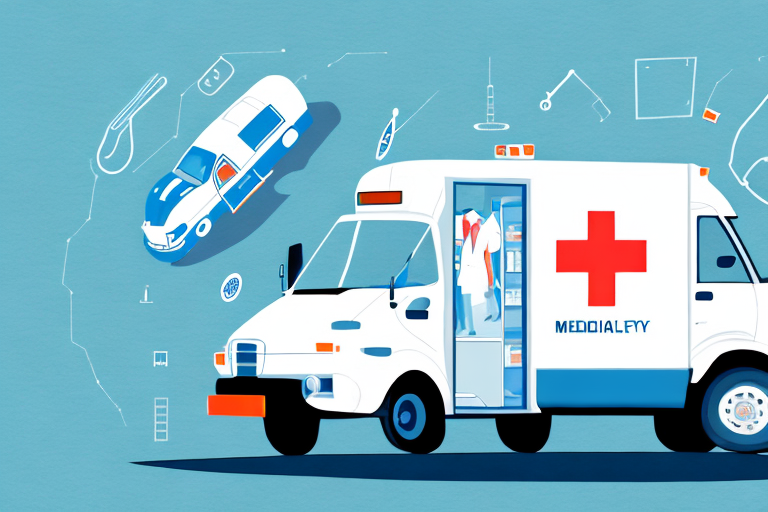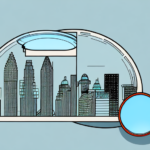Introduction
If you are looking for a career that offers stability, growth, and a chance to make a real difference in people's lives, then medical supply delivery driving may be the right choice for you. In this article, we will explore the benefits of becoming a medical supply delivery driver, including the booming industry, the driver's role in the healthcare system, requirements and qualifications, daily life, advantages and disadvantages, job outlook, salary and benefits, tips for success, and future trends and innovations in this exciting field.
The Growing Demand for Medical Supply Delivery Drivers
The healthcare industry is one of the fastest-growing sectors in the global economy. According to the Bureau of Labor Statistics, healthcare added over 1.3 million jobs from 2019 to 2029, with employment projected to increase by 15% during that period—significantly faster than the average for all occupations.
Several factors contribute to this growing demand:
- Aging Population: As the population ages, the need for medical supplies and equipment increases.
- Advances in Medical Technology: Innovations lead to more specialized and frequent deliveries.
- Healthcare Initiatives: Expanding healthcare services require efficient supply chains.
- Post-Pandemic Recovery: The COVID-19 pandemic highlighted the critical role of medical supply chains, increasing long-term demand for delivery drivers.
These factors ensure that medical supply delivery driving remains a vital and lucrative career path within the healthcare sector.
Role and Responsibilities of a Medical Supply Delivery Driver
A medical supply delivery driver's primary responsibility is to transport medical supplies and equipment from warehouses to healthcare facilities such as hospitals, clinics, nursing homes, and patients' homes. Key responsibilities include:
- Timely Deliveries: Ensuring that supplies are delivered promptly and on schedule.
- Handling Sensitive Equipment: Safely transporting delicate and often expensive medical equipment.
- Compliance: Adhering to all relevant regulations and protocols, including those related to patient privacy and safety.
- Customer Service: Interacting with healthcare professionals and patients, addressing their needs, and providing necessary instructions for using delivered equipment.
- Record-Keeping: Maintaining accurate records of deliveries, including inventory management and documentation.
Medical supply delivery drivers play a crucial role in ensuring that healthcare providers have the necessary tools to deliver quality care to patients.
Becoming a Medical Supply Delivery Driver: Requirements and Qualifications
To embark on a career as a medical supply delivery driver, certain requirements and qualifications must be met:
- Education: A high school diploma or equivalent is typically required.
- Driver’s License: A valid driver's license is essential. Some positions may require a Commercial Driver’s License (CDL), especially if operating larger vehicles.
- Driving Record: A clean driving record is often necessary, as employers prioritize safety and reliability.
- Physical Fitness: The job may involve lifting and moving heavy supplies, requiring good physical health.
- Communication Skills: Excellent interpersonal and communication skills are important for interacting with healthcare professionals and patients.
- Background Checks: Many employers require background checks and drug screenings to ensure the safety and security of medical deliveries.
Additional training may be provided by employers to familiarize drivers with specific medical supplies, equipment handling, and delivery protocols.
Daily Life and Challenges of a Medical Supply Delivery Driver
The daily routine of a medical supply delivery driver can be both challenging and rewarding:
- Early Starts: Drivers often begin their day early, loading their vehicles with the necessary supplies and planning their delivery routes.
- Route Management: Efficiently managing routes to ensure timely deliveries while optimizing fuel and time.
- Interacting with Healthcare Providers: Building relationships with healthcare staff and addressing their needs effectively.
- Handling Unexpected Situations: Dealing with traffic, road closures, or urgent delivery requests requires adaptability.
- End-of-Day Responsibilities: Documenting deliveries, managing inventory, and preparing for the next day.
Challenges may include long hours on the road, physical demands of lifting supplies, and the need to maintain a high level of accuracy and reliability.
Advantages and Disadvantages of Being a Medical Supply Delivery Driver
Like any profession, medical supply delivery driving comes with its set of pros and cons:
Advantages
- Job Security: The consistent demand for medical supplies ensures steady employment opportunities.
- Impactful Work: Contributing directly to patient care and the healthcare system provides a sense of purpose.
- Flexible Scheduling: Some positions offer flexible hours, which can be beneficial for work-life balance.
- Opportunities for Advancement: Experienced drivers may advance to supervisory or managerial roles.
Disadvantages
- Physical Strain: Regular lifting and moving of heavy items can lead to physical fatigue or injury.
- Irregular Hours: Deliveries may require working evenings, weekends, or holidays.
- Stressful Situations: The responsibility of delivering critical supplies on time can be stressful.
- Exposure to Hazards: Potential exposure to infectious diseases or hazardous materials.
Career Outlook: Salary and Benefits
The financial prospects for medical supply delivery drivers are competitive and continue to grow in line with industry demand.
Salary
According to Glassdoor, the national average salary for a medical supply delivery driver is approximately $35,000 per year, with potential earnings ranging from $28,000 to $50,000 based on experience, location, and employer.
Benefits
Employers often offer a comprehensive benefits package, which may include:
- Health Insurance
- Retirement Plans (401k)
- Paid Time Off (PTO)
- Bonuses and Incentives for Performance
- Vehicle Maintenance and Fuel Reimbursements
Additional perks might include opportunities for career advancement, training programs, and flexible working schedules.
Future Trends and Innovations in Medical Supply Delivery Driving
The future of medical supply delivery driving is poised for significant advancements driven by technological innovations and changing healthcare needs:
- Autonomous Vehicles: The integration of self-driving technology could enhance delivery efficiency and reduce operational costs.
- Advanced Tracking Systems: Real-time tracking and monitoring systems improve transparency and reliability in deliveries.
- Eco-Friendly Solutions: Adoption of electric vehicles and sustainable practices to reduce the environmental impact of deliveries.
- Telemedicine Integration: Increased telehealth services may drive more home-based deliveries, expanding the scope of medical supply delivery.
- Artificial Intelligence: AI and machine learning can optimize routes, predict maintenance needs, and enhance overall logistics management.
Staying abreast of these trends will be essential for drivers looking to advance their careers and adapt to the evolving landscape of medical supply delivery.
Tips for Success as a Medical Supply Delivery Driver
To excel in the role of a medical supply delivery driver, consider the following best practices and strategies:
- Prioritize Safety: Always adhere to traffic laws, use proper lifting techniques, and wear protective gear when necessary.
- Develop Strong Communication Skills: Effective communication with healthcare providers and patients ensures smooth deliveries and builds trust.
- Stay Organized: Efficient route planning and inventory management can enhance productivity and reduce errors.
- Be Adaptable: Flexibility in handling unexpected challenges, such as route changes or urgent delivery requests, is crucial.
- Maintain Professionalism: Represent your company with integrity and respect, fostering positive relationships with clients.
- Continuous Learning: Stay updated on new medical supplies, equipment handling procedures, and industry regulations.
Conclusion
Medical supply delivery driving is a thriving career path that offers stability, growth, and the opportunity to make a meaningful impact on the healthcare system. With the increasing demand for medical supplies, advancements in technology, and the essential role these drivers play in patient care, this profession presents numerous opportunities for those interested in combining driving with a purpose-driven career. By understanding the requirements, embracing best practices, and staying informed about industry trends, you can build a successful and fulfilling career as a medical supply delivery driver.




















